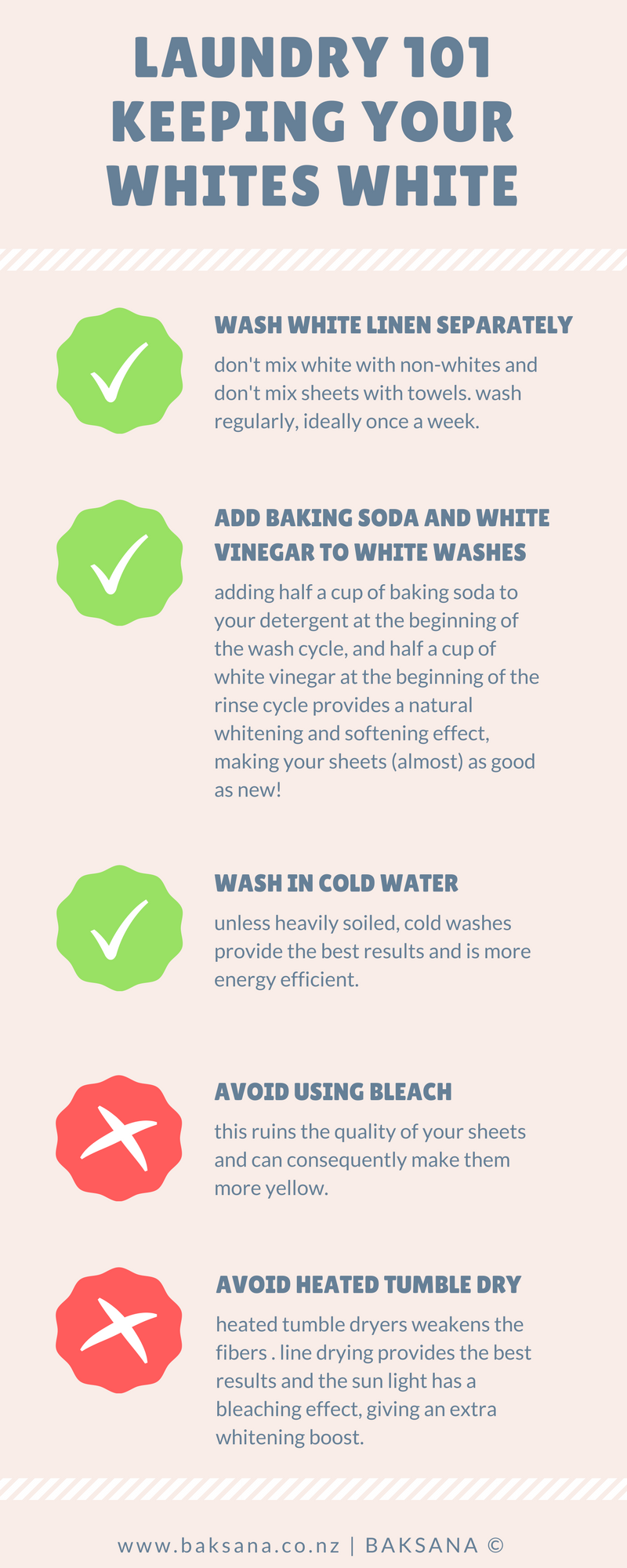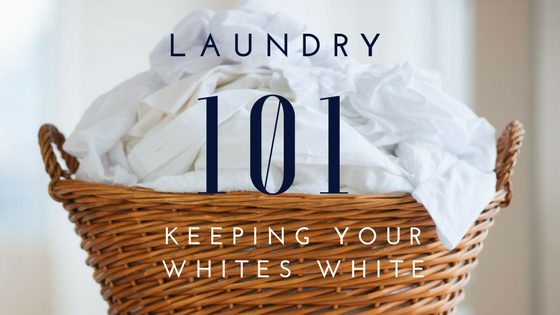Spoiler: no bleach is necessary.
Hold the bleach, sister. There are alternative methods to get your murky laundry sparkling white again. Here, we will share our tips and tricks to keeping your sheets white and up to scratch with five-star hotel standards.
We’ll start with the basics. Wash your white linens separately. Mixing your crisp white sheets with non-white laundry or with dissimilar textures (like towels, for example) often causes discolouration or pilling. Play it safe, keep it separate.
The good thing about white sheets is that in order to keep them clean, your face will inevitably also remain clean. Ladies, you must be diligent about removing your make up. This one is fairly self-explanatory, but unless you like transferring black and orange stains on to your pillowcase, it pays to wash your face before bed.
Regularly laundering your white sheets is critical. Throughout the night, you transfer a whole lot of DNA on to your sheets which leaves the fibres full up with your sweat, body oils, dead skin, hair strands and so on. This will ultimately give your beautiful white bedding a dingy yellow shadow… gross! Washing your sheets regularly will help keep this at bay, therefore you should aim to wash your sheets once a week, and wash the bed cover every second week while you’re at it.
Keep clear from the bleach. Even though chlorine bleach is the go-to for heavy duty whitening and stain removal, this shouldn’t be used on your sheets – save it for the bathroom tiles. Heavy duty whitening can react with your natural body oils and consequently make your sheets more yellow, not less. Bleach also eats away at the fibres in your linens, compromising the quality and longevity of your bed sheets.
When laundering your whites, we recommend adding half a cup of baking soda in with your detergent at the beginning of the wash cycle. Next, at the beginning of the rinse cycle, pour in half a cup of white vinegar. The distinct vinegar odour will rinse out. These two natural whiteners also provide a softening effect, so you can skip the fabric softener. This is an easy and eco-friendly home remedy to whiten your sheets without purchasing expensive fabric bleaches.
Water temperature is important. Unless your linens are heavily soiled, there’s no need to wash your bedding on any other temperature than cold. High heat also breaks down the fibres in your linens, again compromising durability and longevity. Washing in luke-warm is fine if you prefer; however cold washing is the ideal method and additionally the most energy efficient method. Win-win.
For an extra whitening boost, hang your linens in the sun to dry. Sun light has bleaching capabilities (think of your locks in the summer sun), and won’t set stains the way tumble dryers do. Though line drying is the best method, for those who don’t live in the right climate, don’t have the time or the outdoor space for line drying, tumble drying on a low heat is acceptable. If you have the time, take the sheets out of the tumble dryer while they are still slightly damp. Shake them out and let them air; this will give the fibres time to rest and breathe and prevent wrinkles from setting in. This will also increase the life span of your bed linen.
Do you have any laundry tips and tricks you’d like to share with us? Any secrets to white washing we should know? Leave a comment below – we’d love to hear from you!


